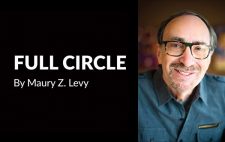 Some kids as young as 8 strap on a helmet, climb into a 400-pound metal machine and push the pedal to the floor. Young dragsters spend lots of time (and lots of money) to fuel a passion they say is all about the adrenaline. Parents say it’s about much more.
Some kids as young as 8 strap on a helmet, climb into a 400-pound metal machine and push the pedal to the floor. Young dragsters spend lots of time (and lots of money) to fuel a passion they say is all about the adrenaline. Parents say it’s about much more.
The race car screams along the Atco Raceway track, a purple and yellow bullet with a nasty streak, the kind of race car that should be called “Nitro Monster” or emblazoned with a skull and crossbones. But this car doesn’t really look intimidating – unless you think SpongeBob SquarePants is intimidating.
The cartoon character’s toothy grin sits on both side panels of the car, and as the driver rises from the cockpit, removing a purple and yellow helmet, you see this speed demon is quite angelic, a young lady who simply enjoys life in the fast lane.
Mariah Laster is just 15. The Pemberton girl is proof that the National Hot Rod Association’s Junior Drag Racing League really is kids’ stuff. But in this case the kids drive half-scale replicas of pro Top Fuel dragsters (the fastest type), and even if they aren’t doing 250 mph like the pros, their top speeds hit close to 85.
Len Capone Jr., who owns Atco Raceway, says you can’t be blinded by the speed. The junior dragster program has benefits that shouldn’t be gauged by a speedometer.
“It’s really a family sport,” says Capone, whose Waterford Township raceway is among 105 NHRA-member tracks in the U.S. and Canada that host the junior program from April through October. “It gives the kids direction. It teaches them how to drive. The competitiveness is good, and I think it also gives them some independence.”
They’re like most kids. Some like Spider-Man. Others play lacrosse. Some always have their nose in a book.
All are addicted to speed – the racetrack kind. “Adrenaline rush” is a phrase you hear a lot.
“It’s just a pure adrenaline rush,” says Michael Richardson, 17, from West Deptford. “There’s nothing like it. You’re trying to stay calm. You’re waiting for that light to come on and then… ”
You’re off. Rocketing from the starting line in a colorful missile that hugs the asphalt, the engine thrust hitting decibels that almost melt eardrums. Roughly eight seconds later, it’s over.
The races pit side-by-side competitors in an acceleration contest on an eighth-mile track. To control speeds among the junior program’s three age groups – novice, intermediate and advanced – NHRA regulations establish time-clock restrictions. For example, in the novice group of 8- and 9-year-olds, drivers ride in dragsters with 5-horsepower, single-cylinder engines and can’t finish the race in less than 12.9 seconds. They risk disqualification if they do.
A fast break at the starting line is important. Drivers must balance speed and the 660-foot distance, mindful that the clock, not horsepower, dictates the outcome. Beginners can still roar along the track at 45 mph.
“You don’t see too many outsiders showing up to do this,” Capone says. “You’ll see the same families. And usually it’s the parents – a dad who races, for example – who have something to do with why their child races.”
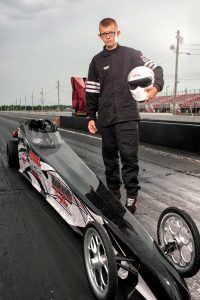
Josh Richardson, 12, has been racing for two years
Michael Richardson has that genetic link. A veteran who has run dragsters for nine years, Michael watched his father Mark race at Atco and then, the day he turned 8 and was eligible for the juniors program, he popped the big question. “Dad, can I race?”
The teen won’t ever forget that Christmas. His folks had quietly bought a used dragster in Carlisle, Pa., and hid it in his uncle’s garage until the big morning.
He vividly recalls winning the first time he raced, enduring six elimination rounds to earn a trophy. Quite a feat considering he had shown up feeling totally out of his league.
“We came here with a beat-up trailer. We pulled it with a beat-up car, and we won,” he says. “I had no idea what I was doing out there. My dad told me, ‘Just go in there and guess.’ So that’s what I did.”
Parents are active participants in junior racing, and sometimes that’s not so easy. Mom Rachael Wilson was out of her mind the first time her son Josh drove.
She wanted to be as calm as her husband Chris. He’d been racing his Camaro for years in Maryland, sometimes Josh with him as a toddler. So when Josh turned 10 and wanted to be a junior drag racer, Chris knew he’d be all right. Rachael wasn’t so sure.
“I was a nervous wreck that first time he raced. I think I even cried,” she says, laughing. “But after seeing Josh make that first pass in his car, it was easier. I’d talked to a lot of moms with kids who raced dragsters. This program does make the kids more respectful of these cars, the power. It makes them more careful on the road.
“We use racing as a bargaining chip at home. If Josh doesn’t do what he’s supposed to do, he doesn’t race that weekend,” his mother adds. “It’s great for schoolwork. I laugh because his dad will tell him, ‘Please, please, please do your homework so we can race.’”
Josh, now 12, likes the Outlaw 330 class now. It’s a division open to teen drivers. The track is 330 feet – half of the traditional eighth-mile course – and it’s old-school speed racing, one car against the other. The first to cross the finish line takes it. Speeds get up to 85 mph. You know who the winner is in about 5 seconds.
That’s also how Sydney Coleman likes it. Once she got to drive Outlaw, there was no turning back.
“You get to go fast,” she says. “With the bracket races, there’s more to worry about while you’re driving and the chance for things to go wrong. With Outlaw, you just go.”
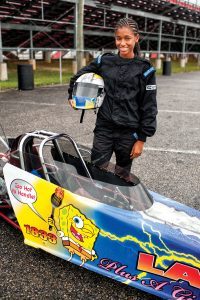
Mariah Laster, 15, has raced since she was 11
The 16-year-old racer and her family travel about 65 miles from their Elkton, Md., home to come to Atco. Sometimes it’s Sydney’s 14-year-old brother Nicholas who is racing.
Sydney doesn’t have a killer streak. She’s insightful and polite, all 5 feet of her, and her appearance – blonde hair in a braided ponytail, purple shirt and black stretch pants – is that of a hometown girl. But any trash-talking, pedal-to-the-metal boy racer would be wise not to tangle with her.
In 2010, at age 12, she battled a 120-car field in her age group to win the national championship at NHRA Junior Eastern Conference Finals in Bristol, Tenn. She earned a $5,000 savings bond and the Wally Trophy, the junior dragster version of an Olympic gold medal.
Last year, though, was tough. She reached the national championship again but lost her two-car race in the final round.
“The feeling of winning that national championship – I didn’t react at first, I was in shock,” recalls Sydney, a high school senior who started racing at 8. “It’s the best feeling in the world. And losing is the worst. That loss in the final round last year, I cried three hours straight that night.”
Ironic that her orange dragster is called “Heartbreaker.” But those speed bumps taught Sydney something about life in the winner’s circle. Sometimes you watch others feel the glow.
“This sport teaches sportsmanship and dealing with heartbreak and losing,” she says. “When things don’t go your way, you learn how to handle it. It’s a good sport for friendships. A lot of times, when you lose, you’re losing to a friend, not just to some boy or girl. That makes it easier.”
They’re the lessons Michael Richardson has taken from his years behind the wheel. He loves the competitive nature of Outlaw racing, loves that it’s like an outing with friends, but he puts his “closet full of trophies” in perspective.
“Once your helmet is on, you don’t have any friends, you just want to win,” he says. “Nobody’s a good loser. But you have to learn how to lose or you won’t make it in this world.”
Mark and Jennifer Richardson always drive home that point to Michael and his brother Patrick, 12, who also races. They believe sometimes you win more when you lose.
“In the long run it’s more rewarding for their maturity. It teaches them to be better losers,” Jennifer says. “I’ve told them, ‘I don’t want you presenting yourself as a sore loser. It makes me look bad as a parent.’ When you get so used to winning, you get cocky and arrogant. That’s why it’s good to lose.”
This past June, NHRA made a controversial move and lowered the age of eligibility. Until then, children had to be 8 to join the Junior Dragster Racing League’s novice program. The organization established a controlled, non-racing training program for 5-year-olds and a youth division with head-to-head competition for 6- and 7-year-olds.
The change has stoked some debate, especially on dragster websites. Even some devout racing disciples have questioned the wisdom of kindergarten-aged drivers in the junior dragster program.
Len Capone thinks parents have to ask themselves a key question. Do they have an “older” 5-year-old or do they have, well, a 5-year-old?
“It’s a judgment call on the maturity of the child,” says Capone, who isn’t expecting a big impact on his Atco dragster program. “Also, this isn’t playing a sport like soccer. Dragster racing requires a hell of a financial investment, and the kid is 5 years old? I don’t even know if it could be the kid’s decision. Who are you doing it for, the kid or the parent? I have mixed feelings on it.”
Capone says NHRA officials have estimated that nationwide participation in junior dragsters is down about 50 percent since the program’s start in 1993, not because of waning interest, but largely because of the financial strain on families. The organization puts the cost of a new, entry-level dragster at $5,000 – and some cars at Atco are worth twice that. Other expenses, such as maintenance, fuel, transport trailers and race clothing add to the tab.
Accepting younger drivers may be NHRA’s strategy to keep those junior dragster wheels turning. About 3,000 kids take part across the country. Dave Mohn, director of the organization’s Northeast Division, which includes New Jersey, says there’s a lot of competition these days.
“The age-group drop basically was the NHRA realizing that other motorsports are starting these kids at the age of 4 in some instances, and once they start in the other forms of motorsports, they typically do not come to junior drag racing,” Mohn says.
Although they’re big boosters of the racing program, moms Rachael Wilson and Jennifer Richardson slam the brakes on any notion that a 5-year-old should be in a dragster.
“I don’t like it. I think it’s too young,” Rachael says. “Our other son, Jacob, is only 7. Kids that age are still too young in their approach to everything. There are a lot of things to think about when you’re driving down that track. We’ll let Jacob try it when he’s 8. If he’s not comfortable, or if we’re not, we’ll make him wait.”
Jennifer feels just as strongly about her youngest son, James, 6, who she says is nowhere near the starting line.
“James is not mature enough for this,” she says. “I would not put him in a car at age five. Lowering the age by three years is too extreme. Maturity levels are just very different for kids.”

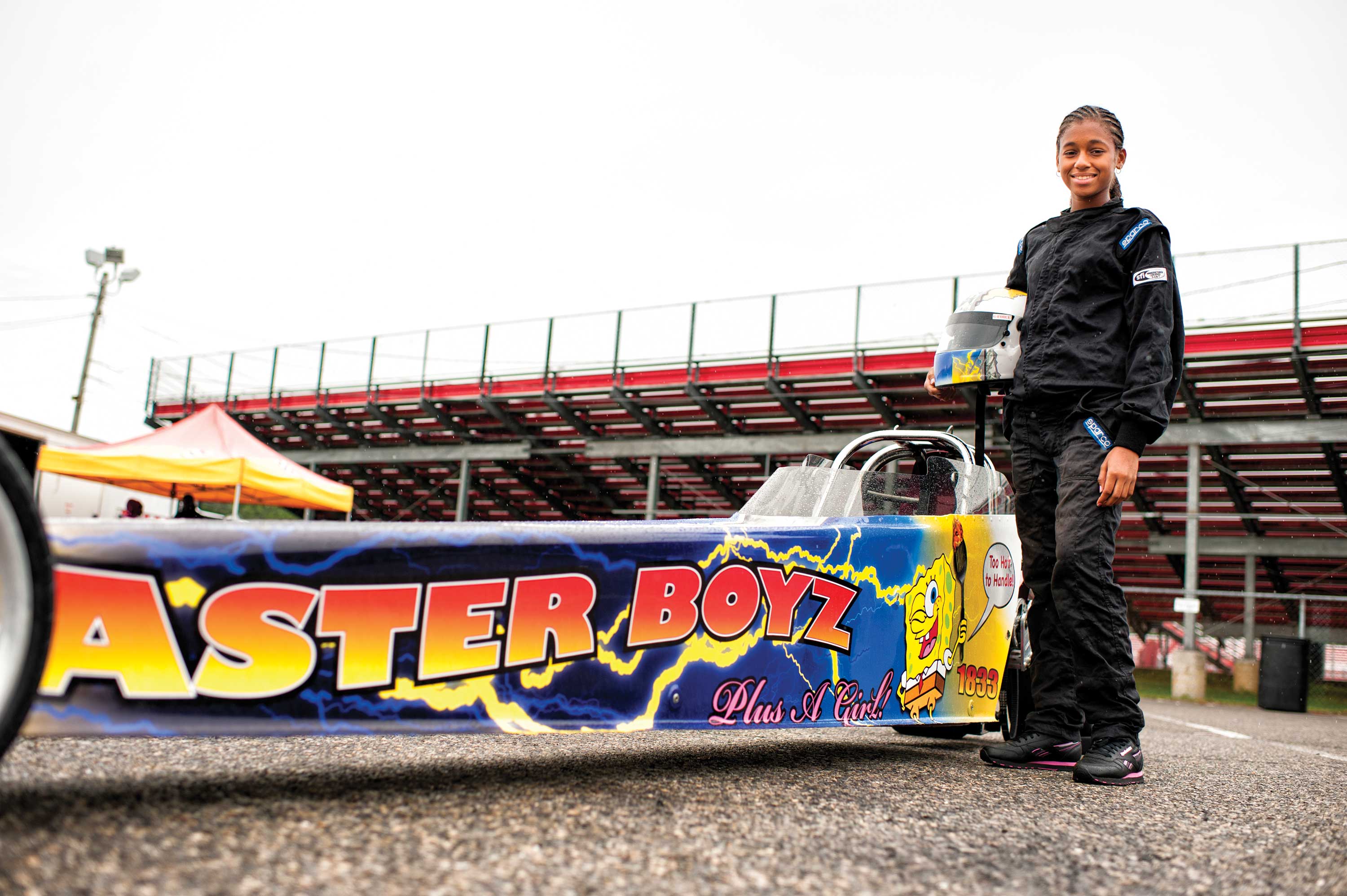
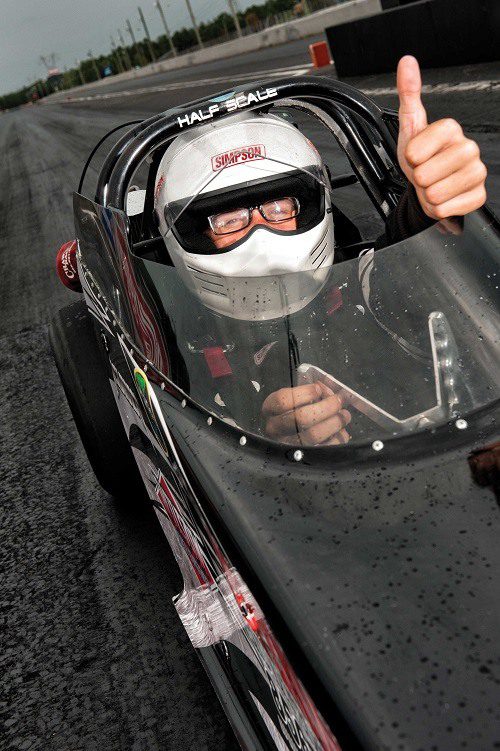 Some kids as young as 8 strap on a helmet, climb into a 400-pound metal machine and push the pedal to the floor. Young dragsters spend lots of time (and lots of money) to fuel a passion they say is all about the adrenaline. Parents say it’s about much more.
Some kids as young as 8 strap on a helmet, climb into a 400-pound metal machine and push the pedal to the floor. Young dragsters spend lots of time (and lots of money) to fuel a passion they say is all about the adrenaline. Parents say it’s about much more.

